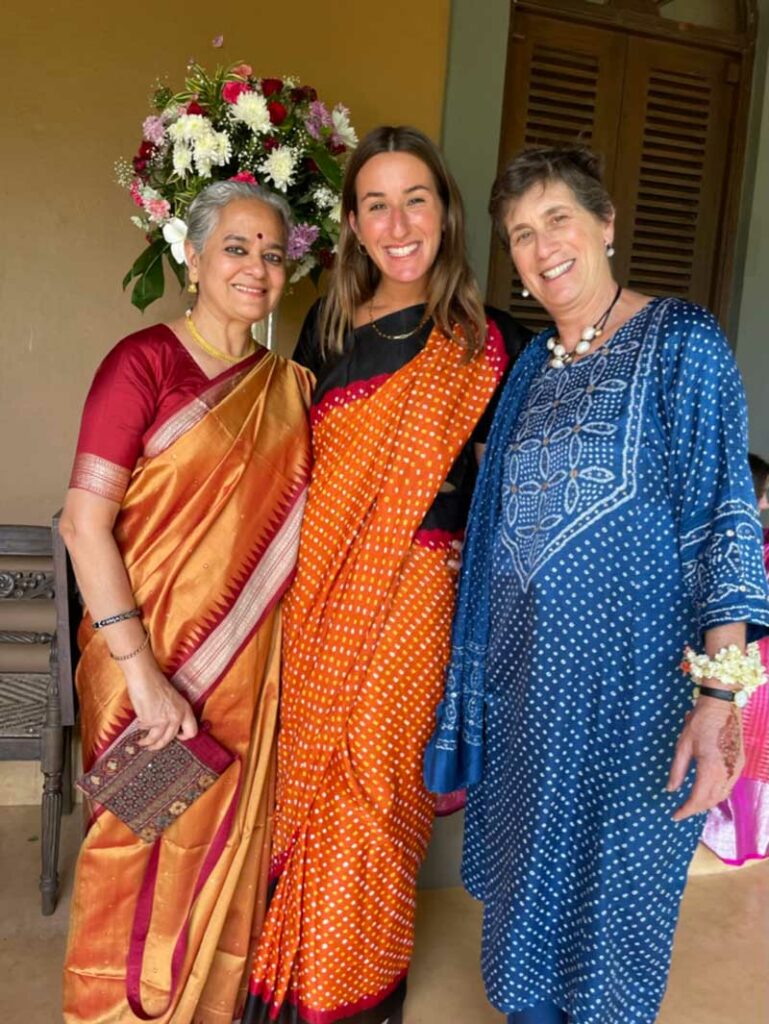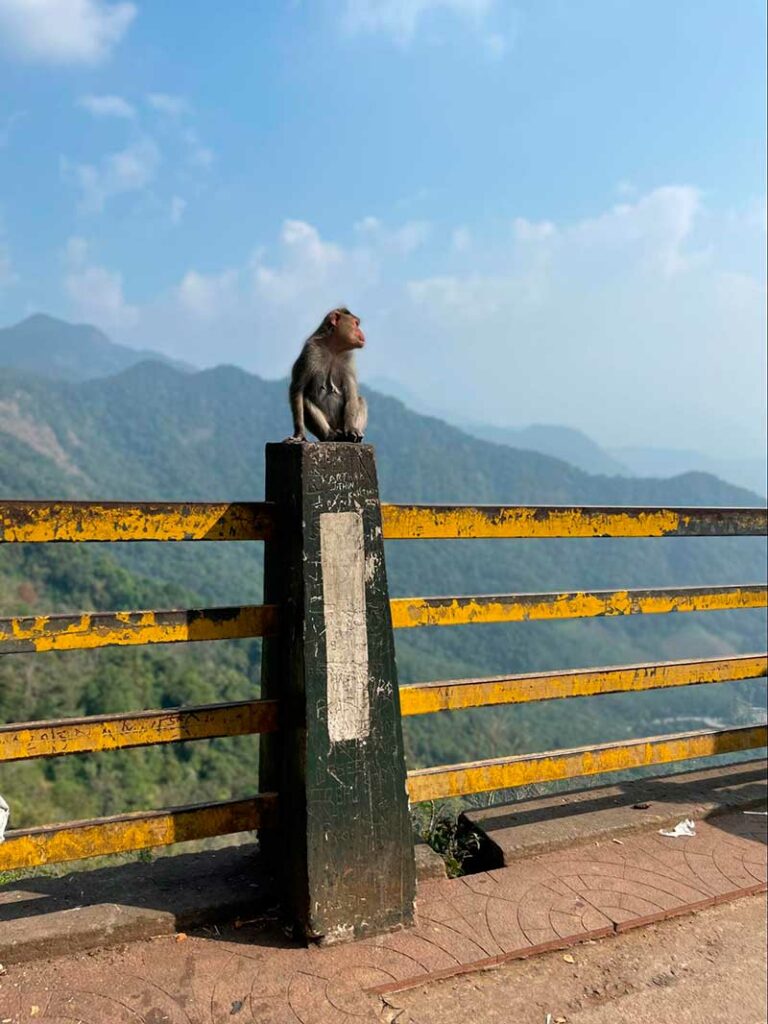
I read somewhere that India is like marmite: you can’t be indifferent. There’s some truth to that statement. Colors, sights, smells, noise, people, experiences and the sheer vastness of the country all demand a reaction.
I have been to India before to work with schools and to visit my dear friend Mirai Chatterjee, who is a leader of the Self-Employed Women’s Association, SEWA. This visit involved more extensive traveling.
Now, I’m trying to make sense of it all.
Accompanied by my husband Steve and daughter, Abbie, whom we called our chaperone, we first spent time with Mirai in Ahmedabad in the state of Gujarat learning about her work there. We also visited Gandhi’s Ashram. I was particularly struck by a poster displaying Gandhi’s notion of Democracy.
Since the mid 1980s Mirai has been working to improve the health and financial security of self-employed women. The informal workforce in India comprises over 93% of the country’s economy and this includes the folks Mirai works with: manual laborers like small farmers, home-based workers, small producers and street vendors.

We began the day in SEWA’s main office with Mirai’s colleagues. Every day begins with an all faiths’ prayer and some yoga. We learned about the various work streams of the organization. Each director gave a short summary of their responsibilities and the pride in their work was evident.
We visited a tiny preschool center in an under-resourced neighborhood. The mothers are mostly street vendors. The child care center was crammed to the brim with children, many donning red Santa caps and other holiday outfits (it was the day after Christmas). The teachers welcomed us and children volunteered to recite songs and other chants they were learning. The children are all fed nutritious meals and snacks; the walls are covered with posters and student work. It is a safe and stimulating environment.
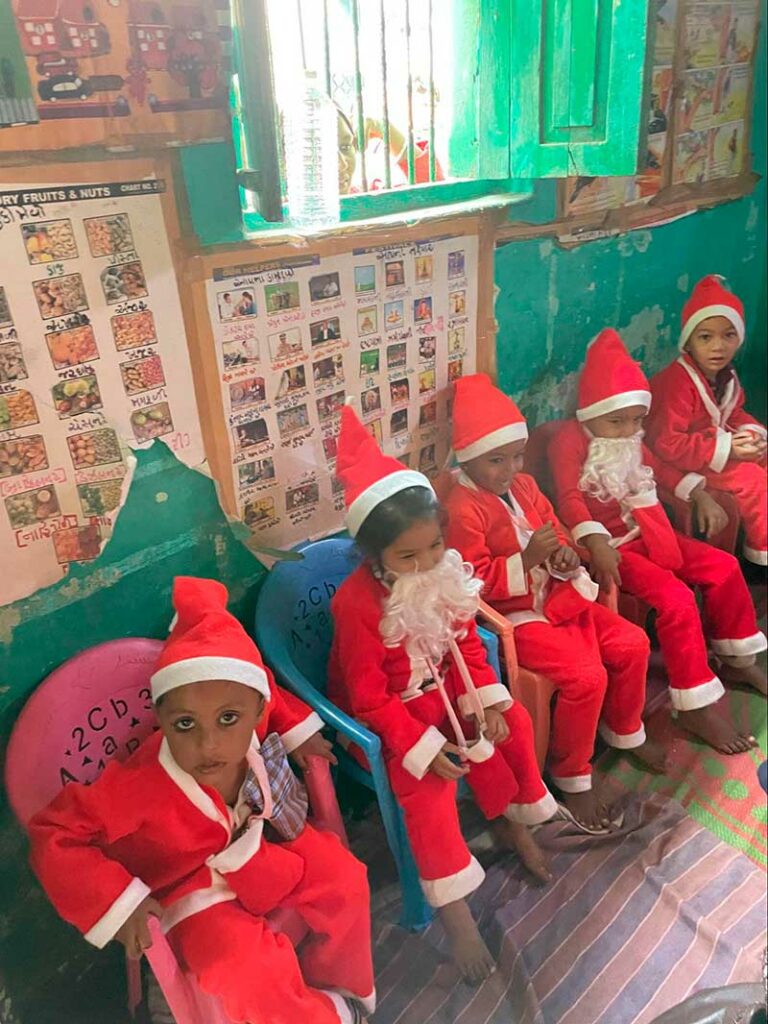
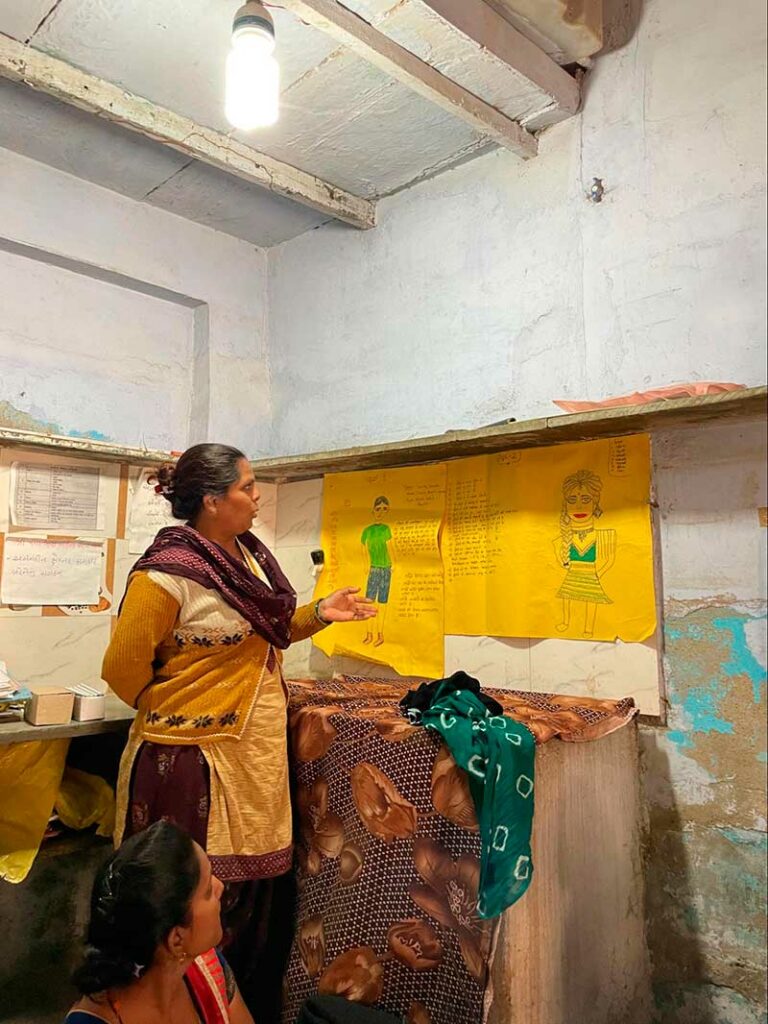
I spied a hula-hoop in the corner and couldn’t resist handing it to Abbie who gave a brilliant demonstration. Not to be out done, a couple of the children were determined to show how good they were, too!
After completely disrupting the school day schedule, we went down the street to one of SEWA’s information centers where women are able to come to have a wide-range of questions answered and forms filled out. One woman needed a new marriage certificate since her name on it didn’t match her birth certificate and she couldn’t receive benefits with a mis-matched name. This required numerous phone calls to various state agencies, all of which the SEWA staff took care of immediately. Another woman arrived confused about how to access her health benefits and that also required a mountain of forms and paperwork. Bureaucracies thrive on paperwork and India is no exception. SEWA staff make these complex and confusing tasks possible. On the walls were drawings of women and men. We learned the women had just finished a seminar on Gender Equality and they proudly explained their posters to us.
We also visited the SEWA Bank which was impressive– it is all run by women for women, something not easily done in India, or arguably, elsewhere in the world. As the women spoke to bankers about taking out loans for their small business, their husbands sat on the sidelines waiting. This is not a sight you see often in India (or elsewhere): women in charge of their own investments.

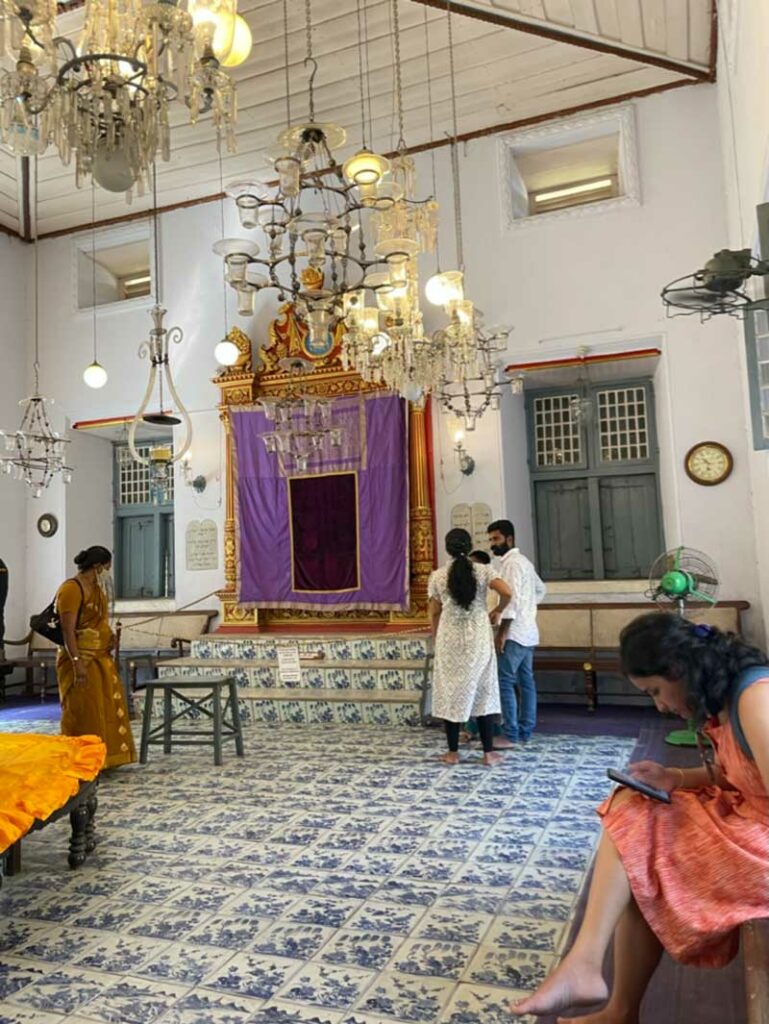
India is easily 10 different countries or more. Leaving the state of Gujarat (a Modi stronghold) and entering Kerala (‘God’s own country’) proved that point. The mantra in Kerala is: “We all get along: Hindus, Muslims, Christians.” Kerala also boasts the oldest synagogue in the former British colony and at one time had a vibrant Jewish community now referred to as “Jewtown.”
Another point of pride for the state is that it boasts near 100% literacy. Residents are proud of their education and schools. Every corner had a mosque, a hindu temple or a church and in some places, all three together. Yet, even though this state has kept out the BJP (Modi’s party) by keeping in the Communist party, the tensions between religions are still just under the surface. It almost seemed that the intensity with which everyone said, “we all get along” was as much to keep violence and disruption at bay. The state next door has had plenty of violence against Muslims. Much of our learning came from our wonderful driver Shafeek, who also demonstrated how to pour tea.
In Kerala, we had the chance to see how life is lived on the backwaters and were also able to see how farmers and fisherman are adapting to climate change by planting pokkali rice, a species that grows very tall and is saline resistant, thus surviving the constant tidal floods. A farmer explained how he rotates production between rice and prawns – a century old practice. The huge Chinese fishing nets (called that because either the Chinese brought them when they traded with Cochin in the early 15th century or they were brought by the Portuguese who established trade ties with the Chinese at Macao) are ubiquitous in this region, but also because of climate change, some fishermen, in partnership with eco-tourism industries, have converted them to tourist sites where one can paddle on the backwaters and then finish the day watching the sunset and eating a home cooked meal.
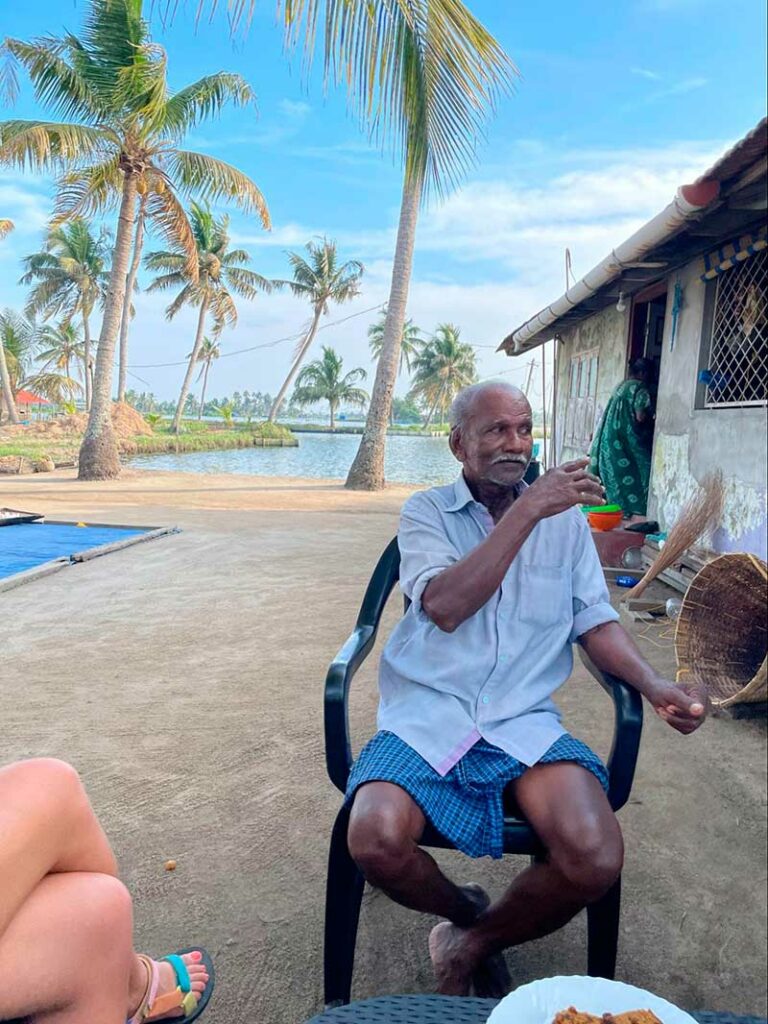
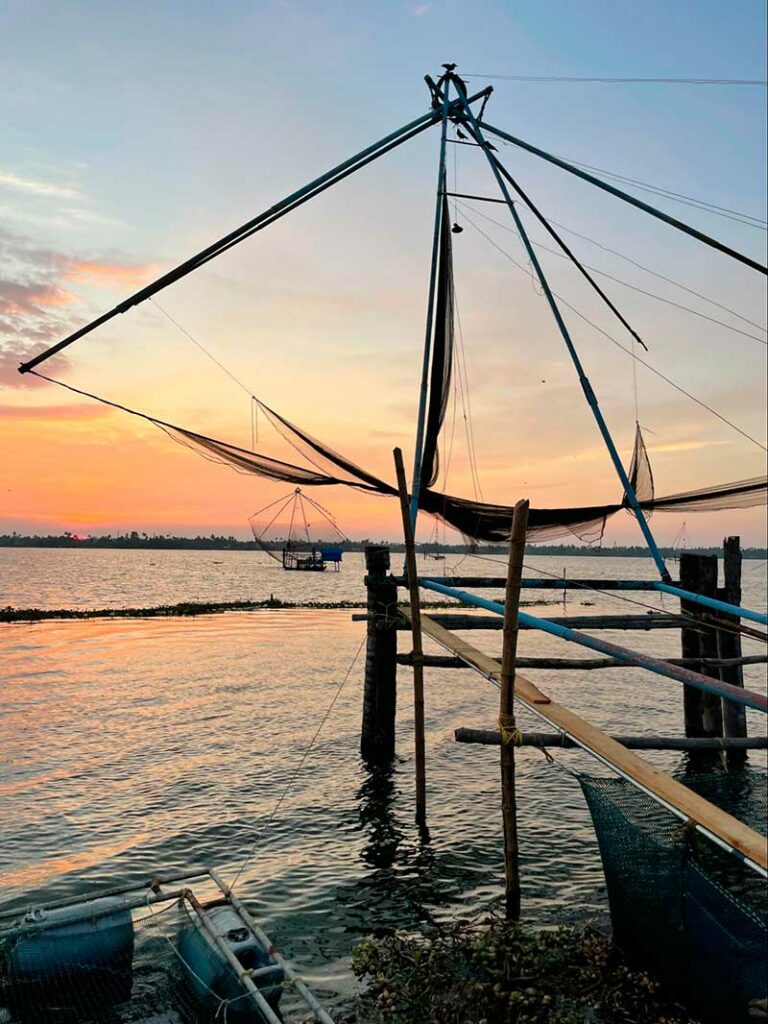




We also visited a cooperative rice production plant, a weaving cooperative and a tea plantation owned by the Catholic church. When did the Catholic church get involved in tea?
One of our most exciting experiences was learning about Kathakali dance from Geetha Varma, one of the first woman to integrate this all male dance form. She proudly talked about how twenty five years ago her sister, Radhika Varma, herself and a few other women thought that it was time for an all female troupe. Their company, Tripunithura (name of the place) Vanitha (woman) Kathakali Sanghom (troupe) have performed all over the world. Although it takes months to learn one hand gesture, eye movement or step, I was honored to get a quick lesson from Geetha. And we all learned how to make the sign for a lotus flower!
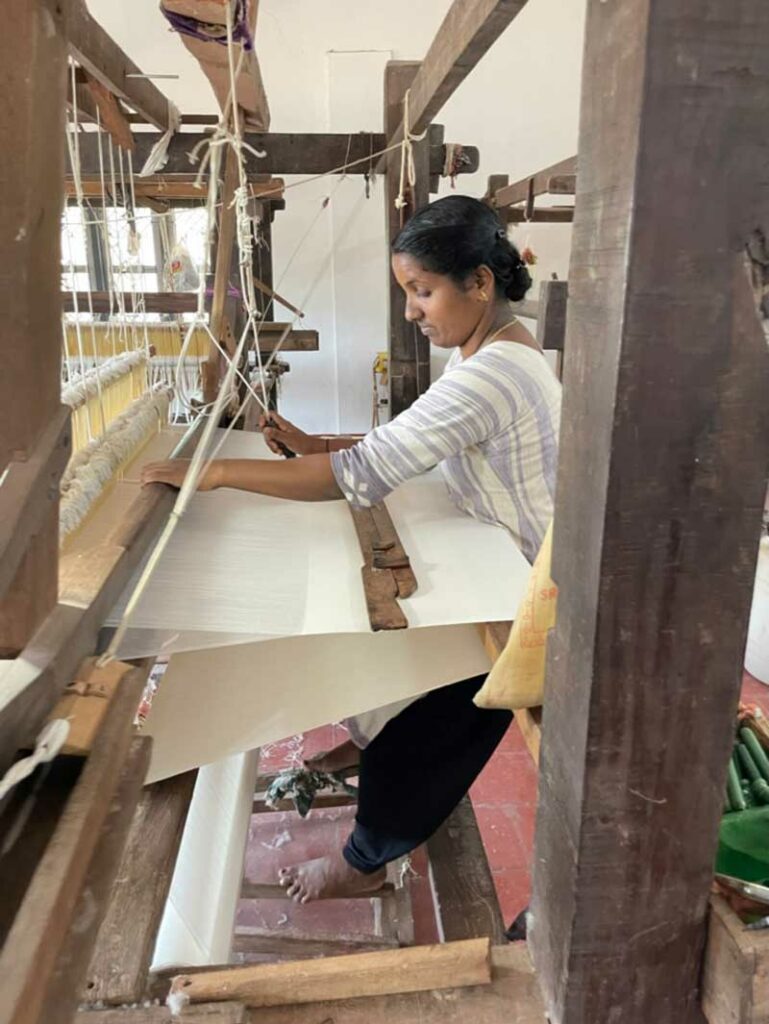
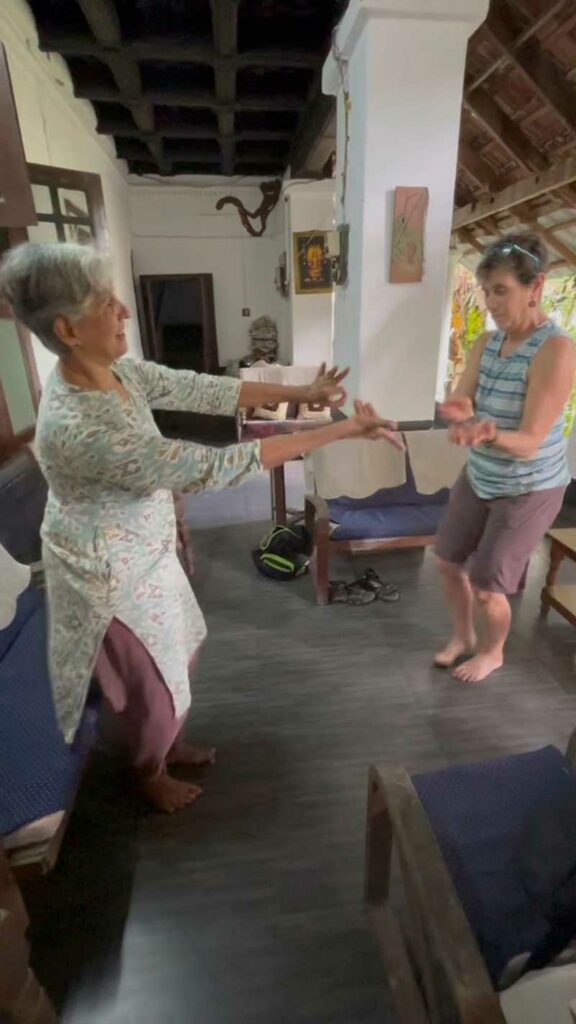

We were traveling during the time of the Theyyam festivals, or dance of the gods. This sacred ceremony is performed in both temples and ancestral homes and allows the people of these rural communities to be connected to the Divine: men who have become gods for this time of ritual. We arrived at the tail end of one of these ceremonies, but men and women were still approaching the ‘gods’ and asking for blessings. Our guide encouraged me to do the same and gave the oracle (the God’s helper) some rupees. Suddenly I was standing before a heavily made up and costumed god. His eyes bored into me and he chanted deeply and sonorously. Although I couldn’t understand the words, I was transfixed. “He’s wishing you a long and happy life,” our guide translated and sprinkled turmeric onto my head. I know it may sound unbelievable to many: but I did feel that I had been touched by something other-wordly. Maybe it was the heat, the bright sun, the huge trees, the music, the dancing god, and all the parishioners at the temple, but something shifted and I burst into tears. Tears of emotion; tears of gratitude. I wasn’t sure. The final part of the ceremony involved weighing coconuts, more blessings and then smashing the coconuts. We even got a peak at the next gods getting made up for their ceremony. It can take upwards of two to three hours to get ready and the gods often sleep while they are being prepared.
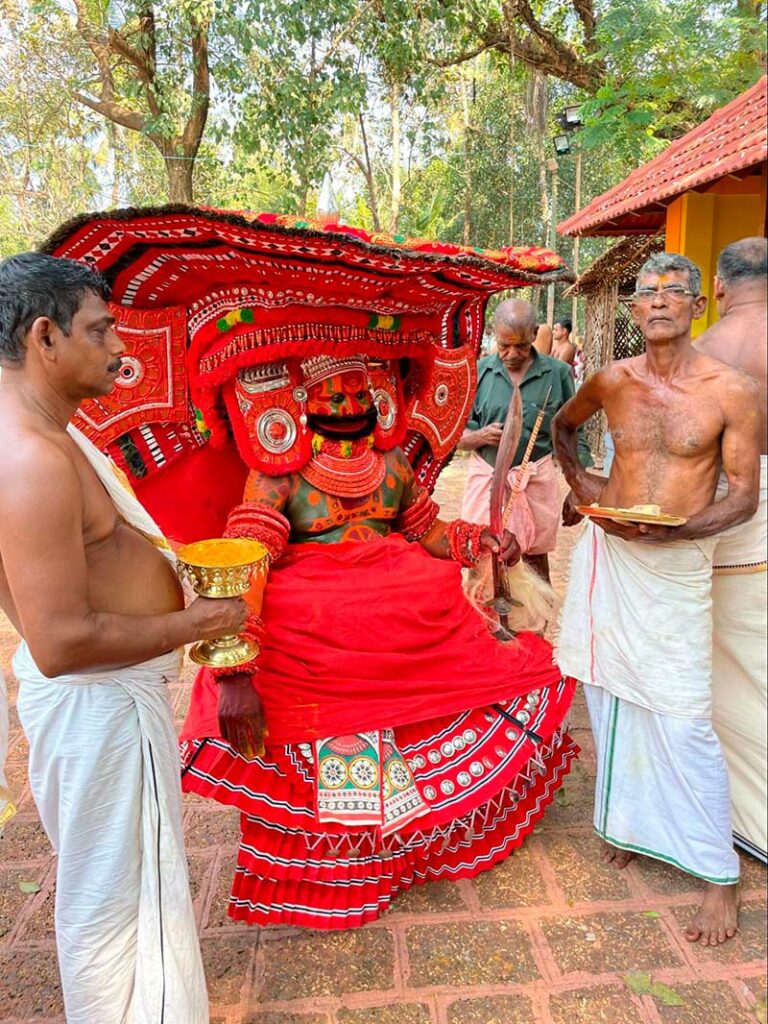
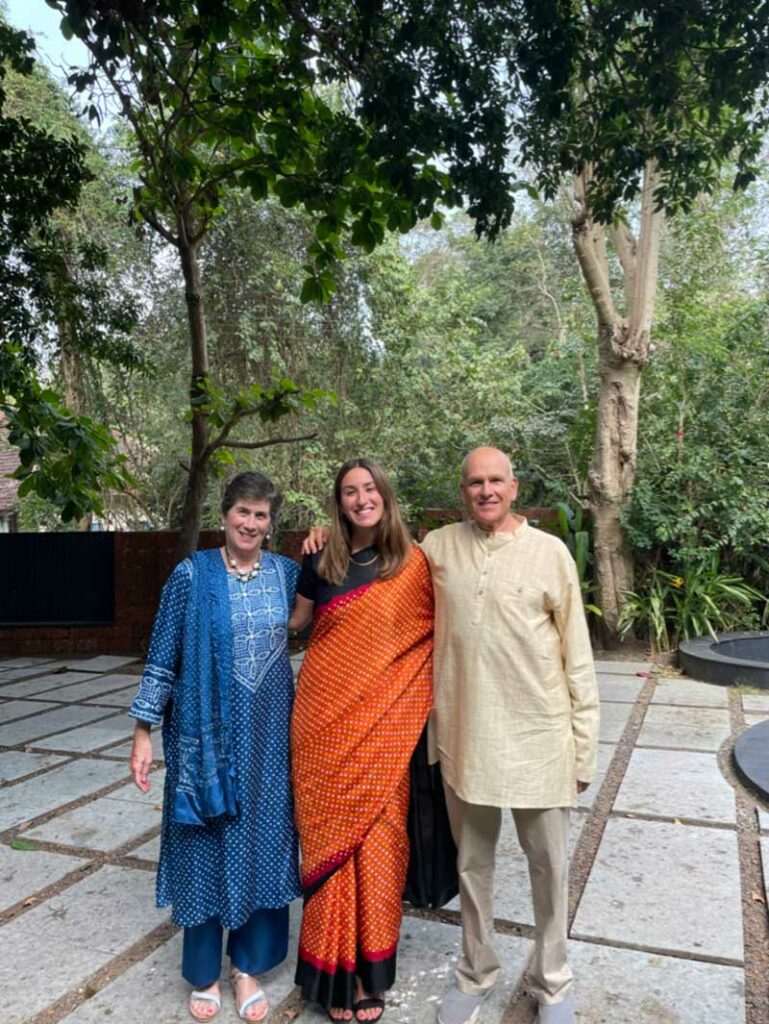


Our last days in Kerala were up in the Western Ghat mountains where the views were breathtaking, the food divine and the temperature finally temperate. Our hotel was new and it seemed unbelievable that anyone had been able to build this high up. Most of the guests were Indians who were coming back home to Kerala from working in the Emirates or were doing a staycation just to try out the pool and soak in the views. “NRIs” (Non-resident Indians) they might be called.
Our last stop was Goa: a completely different vibe from anywhere else. The wedding included Catholic, Hindu, Jewish and Gandhian prayers and rituals. We loved reuniting with old friends and meeting new ones and felt grateful to all that India gave us these past few weeks. I am filled with new ways of thinking and new experiences and will be processing for months to come.
